
Important Cultural Property Wisdom Guardian Bodhisattva Bodhisattva Statue (of Rokkoin Bodhisattva) Higo Keio Structure Kamakura Era / 3rd Years (1224) Large Reigning Temple Collection
From Tuesday, October 2, 2018 to Sunday, December 9, 2018, the Tokyo National Museum holds a special exhibition "Kyoto Great Benefit Temple Kikei and Keikei Only" . Since the exhibition was held on October 1st, I will tell you the situation.
During the Kamakura period, the ancient temple of Shingon Buddhist school called the Great Buddy Temple, which was requested by Yoshikuni Giants in 1220. As there is Senbon Street crossing Kyoto to the north and south, it is familiar to the name of "Senbon Shakado" and has gathered a wide range of faiths from aristocrats to common people as the center of Buddha faith.
It is designated as a national treasure and its main hall, which has escaped numerous warfare including Nenin's turbulence, and also known as having a married couple and hypocrites such as husband and wife as birthplace of "Okame".
The Honjyu is the Buddha's Buddha seated image created by the joyous praise that is the most pupil of Cheonkeong. And, it is the ten great disciple statues, which is the work of the last years of Chungking, who stands in that Buddha's Buddha Seated.
In this exhibition, a lot of masterpieces of 'Keioi' transmitted to these Great Buddhist temples are full. Baekje of the same generations of Chiaki, and the lucky co-star of Kamakura sculpture by the famous master of the Forbidden Next Generation will be realized!
Exhibition landscape
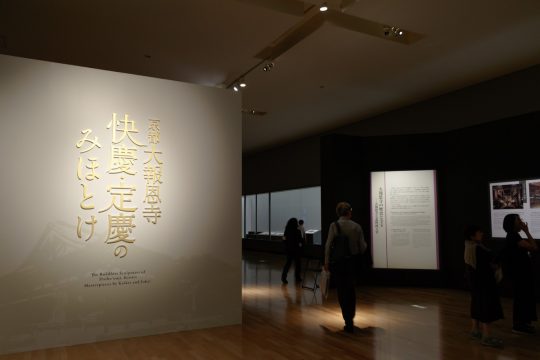
The exhibition is held at the Tokyo National Museum Heiseikan Special 3-4 rooms. A special exhibition "Marcel · Duchamp and Japanese art" (10/2 ~ 12/9) is held in the 1st and 2nd room of the same building, and the fact that two exhibitions are performed adjacently at the same time . Unlike Dushan's exhibition hall where contemporary art works line up, this place is filled with a serene atmosphere where Buddha statue releases, and its contrast is also interesting.
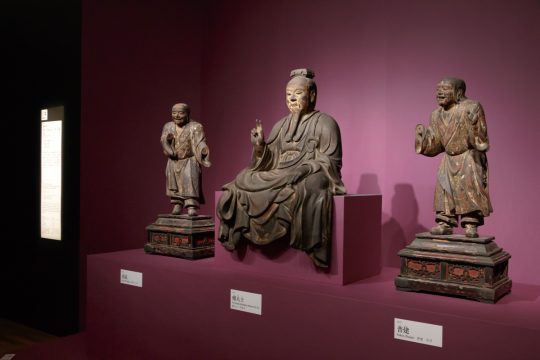
Important Cultural Property Fu Da Da Seit and the Buddhist Statue Hosakura Muromachi Period · Norinaga 25 years (1418) Collection of Great Tigersa Temple
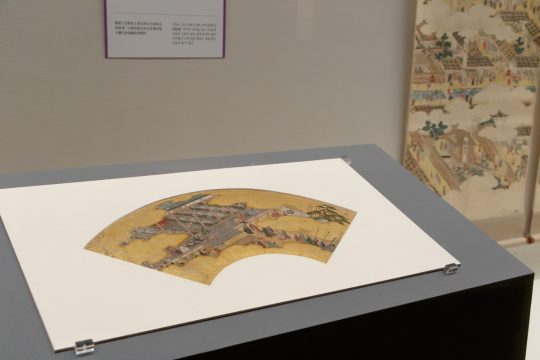
Kitano Chokado Figure Fan Muromachi era · 16 th century
The special exhibition "Kyoto Great Budda Temple Kikei and Keikei Only" is composed of three parts, and Kitano that is transmitted to Great Breeding Temple in "History of Great Buddhist Temple and Temple – Great Borne Temple and Kitano Chono" Cultural property of Yukari Kodo, and the main temple designated as a national treasure as the oldest wooden building in Kyoto (Kyoto city) and its history are introduced.
Kitano Chodo is a Buddhist temple built by Ashikaga Yoshimitsu near the Great Buddha Temple, then was the largest monument in Kyoto City, including Lakonaku and Rukuro. In the wooden temple it was quite lively such as the "Kitano Manchurai church" led by successive generals Muromachi was done, but the cultural properties and sutra etc. which had been dismantled under the influence of the separation of the Buddha and Buddha, It was transferred.
In the first chapter, items of Yukari Kitano, including the Buddha statue of the Heian period, are displayed, and the appearance of the past day is notified as it is now.
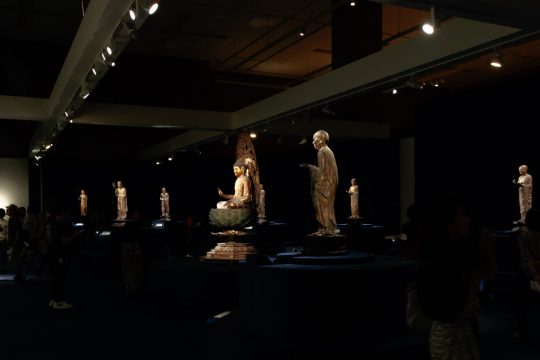

(Central) Important Cultural Property Sakura Horror Statue (Out of the Ten Great Disciple Statues) Chokeyaku Kamakura Period · Collection of the 13th Century Great Tigers
Following "Creation of sacred places – prosperity of Buddha faith" , Honbuds "Buddha Nyorai Seiza" and "Ten Great Disciple Statues", which are now set separately in the temple, are displayed in the same space. It is the first time that 10 Buddha Buddha seated statues and ten great disciple statues, which are open to the public several times a year, are released outside the temple.
In the first half of the thirteenth century when the Great Buddha was built, the revelations of "the last law" (era when enlightenment ceased) were felt strongly due to repeated war. Kaoru Kaito tried to create a place to save people living the world of the last law by building a Buddha who always lives in this world and tells him how to preach.
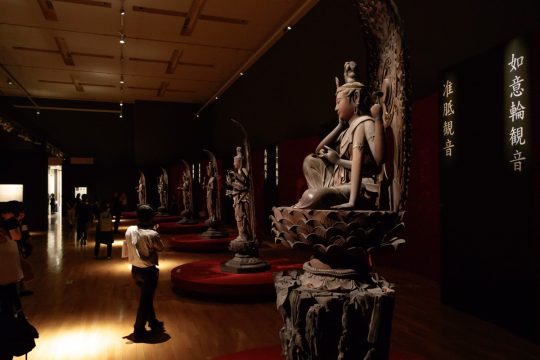
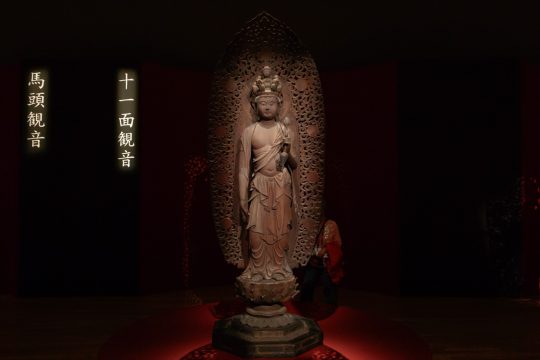
Important Cultural Property Ten Years of the Kannon Bodhisattva Statue (of the Rokkaron Bosatsu Statue) Hego Keio Structure Kamakura Period, 3rd Year III (1224) Collection of Great Tigersa Temple
The center of the third chapter "Rokkaigon Bodhisattva statue and Higo defiant settlement" which decorates the end is the Keichi Buddhist monk at Keikei, the "Rokkaron Bodhisattva statue" by Higo Keioi. The appearance of six-sounding lined with dark, burning crimson backgrounds is a spectacular one. Rokkishin is a Buddha who rescues people from the Rokugo such as hell roads and hungry roads.
The vivid real existence that this statue has makes us feel the desperate idea and wish that people requested from Buddha in the world of the last law.
Exhibition work introduction
Important Cultural Property Senjo Kanon Bodhisattva Statue Heian era · Tenth century Great Tigers temple collection
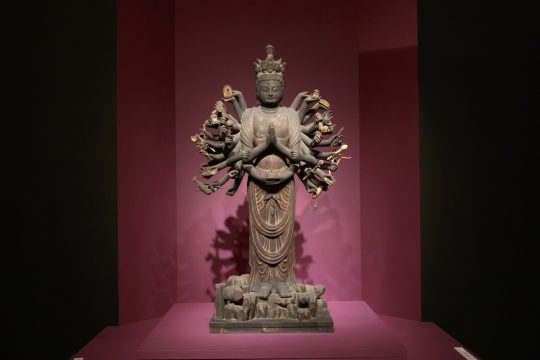
A big buddhist temple that is in the center of Kyoto but leaves the war. To that end, many cultural properties that were contained in the surrounding old temples were gathered in Great Bounty Temple. Among them, this is a masterpiece of the Heian period "Senju Kannon Bodhisattva Statue". Representation of clothing called transverse wave clothing under the knee was prevalent in the early Heian period, which also shows that this work is before the establishment of Great Buddha Temple.
Important Cultural Property Shakya Nyorai Seitama Line Comfortable Work Kamakura Era · Collection of the 13th Century Great Buddhist Temple
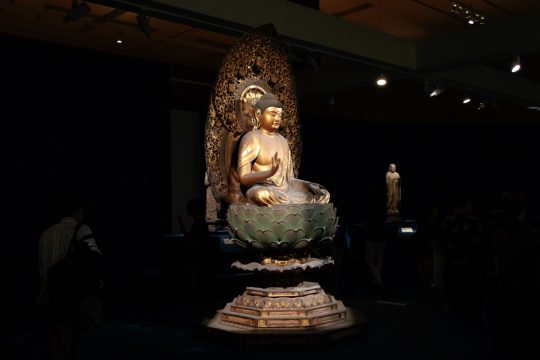
Buddha Buddha who is the secret Buddha of the Great Buddha Temple. The image height is 89.3 centimeters (about 3 scale), below the back is "Eye of Justice" and Akira Oshima, and I know that the line was made when the lineage was in the priesthood "Horoscope".
The appearance likeness appears in the cheek flushing sideways, the eyed tail rising crisply, etc. In its powerful expression, I feel that I started exploring my style after the death of his master, Chi Kei.
Important Cultural Property Associate Profound Sound Bodhisattva Statue (of Rokkoin Bodhisattva Statue) Hego Keio Structure Kamakura Era / 3rd Years (1224) Large Reigning Temple Collection
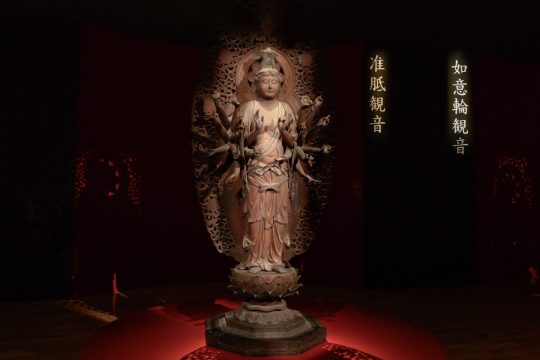
In the Rokkaon Bodhisattva statue there are relatively few examples Kannon (Jun) Kannon. It is a statue of a woman embodying the heart of mercy. It was revealed that the signature of "Independent Hego discrimination Keikei" was found in the ink story found in the statue, and it is a masterpiece of Keikei, a skillful buddhist of the next generation. In addition, although Kaya of a conifer is used as a six-sounding sound, this is because he is conscious of the "altarpiece" originally made of sandalwood.
I am amazed by the expression of very detailed details, such as the soft texture of the tied hair and the depiction of the clothes that scratch the air. Please come to the venue and enjoy the sculpture of Keikyu at hand!

It is also a big feature that the backlight and the pedestal are left as they are at the beginning of the image. Especially light hunting (one that embodies the light emitted by Buddha) is fragile because it is brittle, and it is very rare that things at the beginning of the image are completely left.
Also, the statue of Rokkaun Bodhisattva is a figure with a light till until October 28 (Sunday), from October 30 (Tue) of the late period, you can remove the light back, and you can appreciate its appearance as close as possible. It is an opportunity to enjoy the charm of Kannon from an angle different from usual, such as gently curved back curve and patterns of garment of elegant back.

Major masters that opened up the expression of the new era, Shinki and Chungkyeong. In the 1220s when the great temple was built, the two of them left the stage stage one after another, and it was an era when the next generation Buddhist tea ceremonies, such as Jeongjeong, began active. From the masterpiece of the gem which remains in Great Bounty Temple, you can feel the troubles of creation of such next generation Buddhists, trial and error, and the serious "form of prayer" of the people of those days.
The exhibition will be held from October 2 (Tuesday) to December 9 (Sun) in 2018.
Why do not you think about Kyoto in the Kamakura period at the venue where the Keishi "super stars" gather?
Summary
| Exhibition name | Special Exhibition "Kyoto Great Benefit Temple Kikei · Setongake only" |
| Society | October 2 (Tue) – December 9 (Sun) in 2018
9: 30 ~ 17: 00 (Admission is until 30 minutes before closing) (However, it is open until 21:00 on Friday, Saturday, October 31 (Wednesday), November 1 (Thursday) during the exhibition) |
| closing day | On Monday (October 8th (Monday · Public Holiday) is open, closed on Tuesday, October 9) |
| Venue | Tokyo National Museum Heiseikan Special 3-4 rooms (Ueno Park) |
| Admission fee | General 1,400 yen (1200 yen), university students 1,000 yen (800 yen), high school students 800 yen (600 yen)
Junior high school student or less * In parentheses, group fee of 20 people or more ※ Person who has disabled note book and one carer is free |
| Official site | https://artexhibition.jp/kaikei-jokei2018/ |
Here's a synopsis "Marcel Duchamp and Japanese art" report here: https://home.ueno.kokosil.net/en/archives/27322


